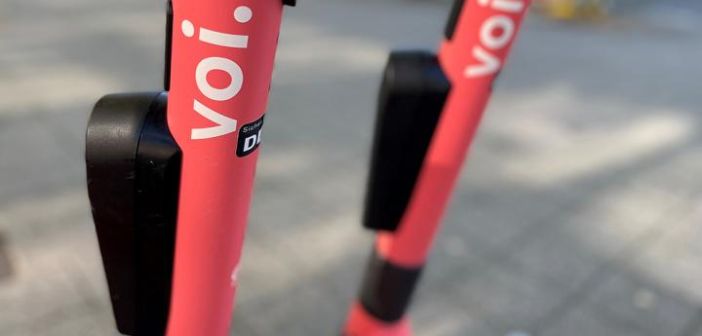Micromobility operator Voi is harnessing computer vision technology on its e-scooters in Norway’s capital Oslo, as it aims to combat pavement riding and problem parking.
Voi has previously trialled computer vision systems in Northampton. Now working with Drover AI the e-scooter operator has launched PathPilot technology in Oslo.
PathPilot is designed to will boost Voi’s geo-fencing capabilities in the city producing precise results at a level that existing GPS-based solutions cannot offer, particularly in a dense built-up environment like Oslo.
The technology, similar to the sensors used in autonomous vehicles, can also be linked directly to a scooter’s motor to automatically slow the speed of the vehicle when it enters forbidden rider zones, such as pavements.
Furthermore, PathPilot has the capability to train its parking algorithm to spot if a scooter is parked correctly. Using the camera as a sensor, the technology can help Voi and Oslo City Council govern and control how and where scooters are parked.
By collaborating with Drover, Voi aims to build a record of where and how the scooters are being ridden in Oslo, helping to inform algorithms that can prevent pavement riding and enable better scooter parking.
PathPilot will also automatically deliver actionable insights on fleet use and rider behaviours which Voi can then share with Oslo City Council to help improve the service. This could see the location of e-scooters optimised to minimise the risk of pavement riding while PathPilot can also recognise fallen scooters and flag them for corrective action.
“It’s clear that micromobility has a key role to play in a sustainable future for urban transport and we know AI can help solve some of the industry’s toughest problems,” said Alex Nesic, co-founder and chief business officer at Drover AI.
“We look forward to seeing what today’s news in Oslo will mean for the future of micromobility.”





